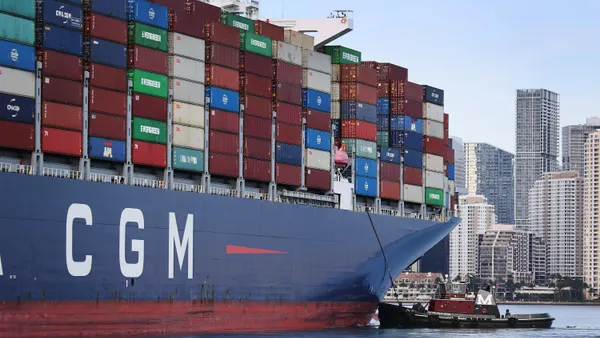Dive Brief:
- Air cargo demand was up 9% year over year in September, sustained by modal shifts in container shipping disruptions, typhoons, ongoing e-commerce demand and a cargo surge ahead of China’s Golden Week holidays, according to an Oct. 2 report from Xeneta.
- But October may be a “whole new ball game” as supply chains are expected to take four to six weeks to recover from the shortlived, 3-day strike at U.S. ports, leading into November which is the busiest month for air cargo volumes, said Chief Airfreight Officer Niall van de Wouw.
- In October, rates could quickly rise on some trade lanes because of the “fear-of-missing-out (FOMO) effect as air cargo capacity leaves the market for the winter,” van de Wouw said. Conflict is escalating in the Middle East, potentially bringing further Red Sea disruption for ocean freight, he added.
Dive Insight:
Global events are putting 2024’s air cargo peak season preparation to the test, said van de Wuow. But despite market volatility, companies are more prepared this year to handle peak season uncertainty, van de Wouw explained.
“There are now more precise agreements in place on how to navigate the storm the market is likely entering,” he said. “There are agreements around rates, surcharges, and the timeframes in which they can be applied, but there’s going to be a fine balancing act between maintaining relationships and being tempted by the short-term benefits these market conditions are creating.”
But 2025’s macroeconomic outlook isn’t great, he said, which may prompt carriers to capitalize on opportunities to increase rates. He added that there are signals that peak surcharges are already being accepted by forwarders and shippers.
In September, spot rates from Asia to North America “topped the chart in September,” according to Xeneta, surpassing other global corridors by more than $2 per kilogram. Meanwhile, the rates on the Europe to North America tradeline were roughly the same month over month, but may spike if the U.S. East and Gulf Coasts and Canada port strikes are not resolved.
With signed contracts there’s less room for the temptation of large rate increases during a hot peak season, said van de Wouw. “But we do see a piece of the market where you’ve got to ‘pay to play’ and that could become a potential ‘wild west.’ Shippers or forwarders may end up there due to unforeseen demand and it could be an expensive game,” he said.
Editor's note: This story was first published in our Logistics Weekly newsletter. Sign up here.














